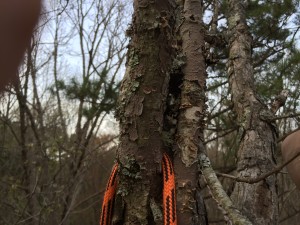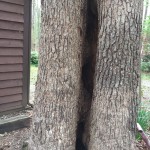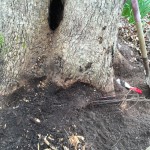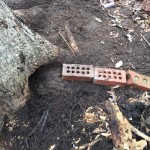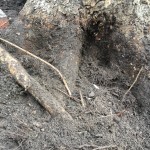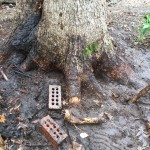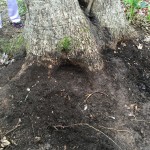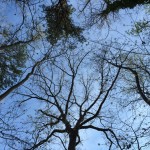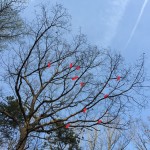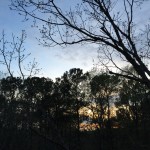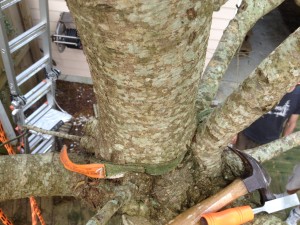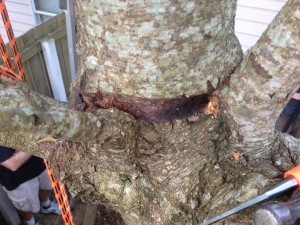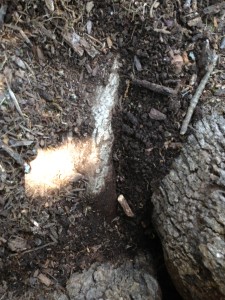After presentations in Singapore and Brisbane, I promised to list references. Time to deliver! I have tried to categorise the below listing in a logical fashion, but I probably failed. Anyway please contact me if you don’t find what you need.
Maybe I can find it, maybe I can point to it, or maybe we’ll just wonder at the marvelous strategies adopted by veteran trees as they adapt to changes in their environment.
PRUNING
A look at tools and techniques: PolePruning_2008_06-1
Restoration Pruning_Branches, Stems, Roots 0711
Mike O’Ryza and the Case of the Vexing View 111020(1)
Retrench cherries morris arb aiello
Goodfellow Branch Failure demonstrates the increase in branch stability by small doses of reduction pruning. Many subsequent studies by North American researchers further establish the effectiveness of reduction pruning.
RETRENCHING HOLLOW TREES FOR LIFE 131226 tcia is the handout from a 2013 talk on this topic.
Dankers Doug-fir mgt 1308
Burnham-beeches-management-plan
Taichung standard mandarin
Advanced Structural Pruning
pvw retrench
pruning collar dujesieffken
BS3998 Pruning 110830 Jon Kiely
Reduction Size Matters g&g 0711 Regeneration research
Pruning for Preservation 1106 AN speaks for itself!
AA Car Canopy Restoring topped trees for a car dealer
Retrenchment Fay ITMP Neville Fay’s general look at planning for this type of work. My approach is influenced by many arborists around the world, too many to list here. Neville’s studies confirmed, supported and informed my work on veteran trees, for which I am most grateful.
TREE RISK MANAGEMENT The resources below illustrate a comprehensive approach to managing veteran trees. Complete assessments contain a comprehensive specification of management options, and expected results. Delivering specifications enables informed decisions.
ISA CEU Basic Tree Risk Assessment complete integrating assessment and management.
AREA 140801 is a poster presented at ISA International.
DD LLL 1406 is a story written to dramatise the assessment and management of one such tree.
Eiche_Ohio 131204 Dr. Frank Rinn’s look at the same tree
Global View of Trees and Risk (1)
Kvill Oak Report 140610 copy suggests some management options for the fattest oak in Europe.
US Champion White Oak 140320 looks at the largest Quercus alba in the US.
GFCA_Report_121018final-1.pdf one more case study of prominent trees near Washington DC, US. Both are gone now, victims of faulty consulting.
del tredici aging-and-rejuvenation-in-trees 1999
Mitigation or Death was an earlier look, published in advance of a talk at TCIA Expo.
Valuing Vets AA Aug-Sep 2014
usfs storm_tree_response
usfs ice damage survey
ted green fungi, trees and pollards
Hollow tree sealing fay
Ancient Tree Guide
Tree Risk Management Form 130405
Read et al Arb Journal 2013
cass nutrient bed
mature tree management
Wessolly How hollow may a tree be
Swage research auf 2011
TCIA Biomechanics nov 2010
Tree Risk Management Form 130407
IWM: INTEGRATED WILDLIFE & DECAY MANAGEMENT
FUNGAL STRATEGIES OF WOOD DECAY IN TREES A 2002 review in ISA’s Journal of Schwarze’s landmark work.
habitat creation
Cavity wildlife 2013 bunnell pnw
decay_ArbNews_2009_02 A look at detection devices
decay study finland
Ooze in the News from TCI Magazine 09-04
Vines in Trees
Hazard & habitat2 NF
ted greenTREE_FODDER_97_2
ted green The_first_landscaper
ted green SoilReserves 1108
The Dynamic Forest Frans Vera
ted green Value of tree and shrubs to wildlife
Ted Green The_Wind_Doth_Blow_0705
Ted Green open-grown trees09
Value of Different Tree & Shrub Species for Wildlife – Ted Green
usfs decay 1998
Decay Boddy_and_Raynor_1983[1]
Japanese Tree Doctor Training Manual
IMMORTALITY OF TREES Programmed to live indefinitely.
immortality del tredici 1999
Immortality-PLANT SYMBIOSIS AND PATHOLOGY – Alan Rayner
immortality osnabruck
immortality torino 2004
MISCELLANEOUS
Meilleur-PHC-CEU (1) Client relations and managing trees for health
Higher Education TCI March_07
AA EAC 1410
Lightning TCI 2007
LBG III Managing Stem-Girdling Roots1.doc
Detectives Guide to Report Writing 1008 AA
Metzger Historic Tree Collection Management 1501
Slater – The Failure of Forks
Reiterates_Architecture-Images

